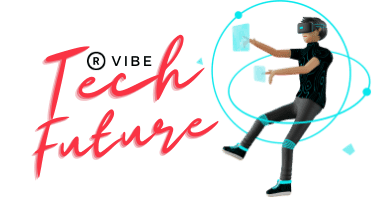Blockchain technology is renowned for its transparency and decentralization, but this raises an important question: How are user identities protected in a public blockchain? While blockchain transactions are publicly visible, the identities of users are safeguarded through advanced cryptographic techniques and privacy-focused mechanisms.
In this article, we’ll explore how blockchain ensures anonymity, the challenges it faces, and best practices for users to protect their identities.
Understanding Blockchain’s Public Nature
What Makes Blockchain Public?
Blockchain is a distributed ledger technology where all transactions are recorded on a public ledger. This ledger is accessible to anyone, ensuring transparency and immutability. However, this transparency doesn’t mean that user identities are exposed.
The Role of Cryptography in Privacy
Blockchain relies heavily on cryptography to secure data. Instead of using real names, users are identified by public addresses—a string of alphanumeric characters. These addresses act as pseudonyms, ensuring that personal information remains hidden.
How Blockchain Protects User Identities
1. Pseudonymity Through Public Addresses
Every user on a blockchain network has a public address and a private key. The public address is like a username, while the private key is a password that grants access to the funds or data associated with that address. Since the public address doesn’t reveal personal information, users can remain pseudonymous.
2. Encryption for Secure Transations
Blockchain uses asymmetric encryption to secure transactions. When a transaction is initiated, it is signed with the sender’s private key and verified using their public key.This ensures that only the intended beneficiary can pierce the sale details.
3. Zero-Knowledge Proofs for Enhanced Privacy
Some blockchains, like Zcash, use zero-knowledge proofs to enhance privacy. This technology allows one party to prove the validity of a transaction without revealing any underlying data.
4. Decentralization and Data Distribution
Blockchain’s decentralized nature means that data is distributed across many bumps. This makes it nearly impossible for hackers to target a single point of failure and access user identities.
Challenges to Identity Protection in Blockchain
1. Blockchain Analysis Tools
While blockchain transactions are pseudonymous, blockchain analysis tools can sometimes de-anonymize users by tracing transaction patterns. For example, if a public address is linked to a real-world identity, all associated transactions can be exposed.
2. Human Error and Poor Practices
Users may inadvertently reveal their identities by reusing addresses, sharing public addresses on social media, or failing to secure their private keys.
3. Regulatory Compliance
In some jurisdictions, blockchain platforms are required to comply with Know Your Customer (KYC) regulations, which can compromise user anonymity.
Best Practices for Protecting Your Identity on Blockchain
1. Use New Addresses for Each Transaction
Generating a new public address for every transaction can make it harder for analysts to trace your activity.
2. Leverage Privacy-Focused Blockchains
Consider using blockchains like Monero or Zcash, which are specifically designed to enhance privacy.
3. Secure Your Private Keys
Store your private keys in a secure offline environment, such as a hardware wallet, to prevent unauthorized access.
4. Avoid Sharing Personal Information
Refrain from linking your public addresses to real-world identities on social media or other platforms.
5. Use VPNs and Tor for Added Anonymity
Using a Virtual Private Network (VPN) or the Tor network can help mask your IP address, adding an extra layer of privacy.
Featured Snippet Optimization
How Does Blockchain Protect User Identities?
Blockchain protects user identities through pseudonymity (public addresses), encryption, and decentralized data storage. Advanced techniques like zero-knowledge proofs further enhance privacy.
Can Blockchain Transactions Be Traced?
Yes, blockchain transactions can be traced using public addresses, but user identities remain protected unless linked to real-world information.
FAQs About Blockchain Identity Protection
1. Is Blockchain Completely Anonymous?
No, blockchain is pseudonymous rather than completely anonymous. While transactions are linked to public addresses, these addresses don’t directly reveal user identities.
2. Can Governments Track Blockchain Transactions?
Governments can track blockchain transactions using analysis tools, especially if users fail to follow best practices for privacy.
3. What Are the Risks of Using Blockchain?
The primary risks include exposure to blockchain analysis tools, human error, and regulatory requirements like KYC.
4. How Can I Enhance My Privacy on Blockchain?
Use privacy-focused blockchains, generate new addresses for each transaction, and avoid linking public addresses to personal information.
Conclusion
While blockchain provides several privacy safeguards, users must take proactive steps to protect their identities. By leveraging privacy-enhancing tools and best practices, blockchain participants can maintain their anonymity while transacting on public networks.

